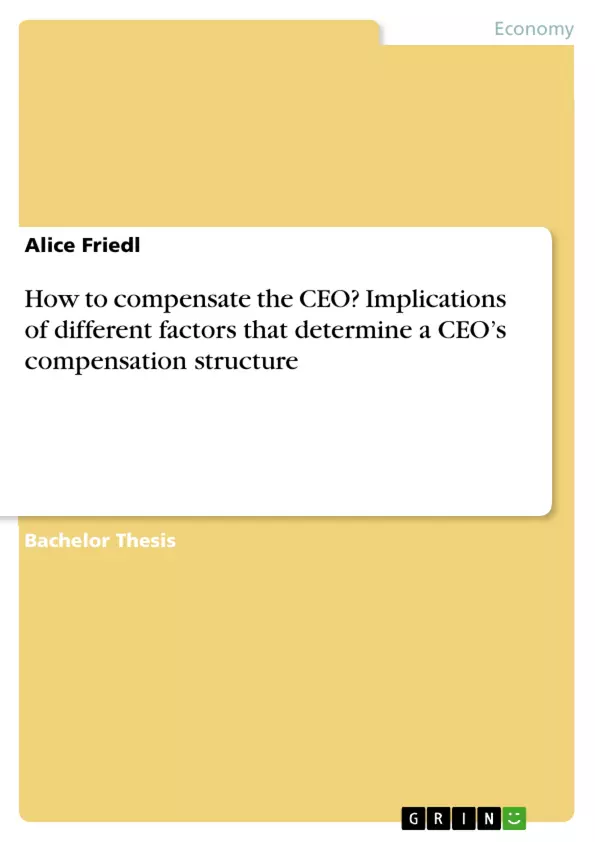The objective of the present thesis is the presentation of the most important theoretical ideas to determine an adequate compensation for top managers and their empirical verification.
Basis of the empirical assessment are the remunerations of the CEOs of five German companies and business units with diverse sizes and ownership structures. The principal-agent theory has proven most relevant, concluding a pay-per-performance remuneration structure that aligns the financial interests of the company and its executives. The balance between short-term goals and sustainable growth is achieved by a mix of selected short- and long-term incentives. Empirical evidence shows that recently size has become a major determinant of management remuneration and the pay-for-performance link is increasingly weak. Overall the empirical results of the thesis imply that the principal-agent theory is still seen as a valid instrument to create a balanced and for both parts favorable pay package. However, the use of long-term rewards to create sustainable growth is neglected in smaller companies. Size is seen as a relevant factor. The CEO-worker pay ratio is estimated unsuited and insignificant for determining executive compensation.
Inhaltsverzeichnis (Table of Contents)
- INTRODUCTION
- CEO COMPENSATION AND ITS DETERMINANTS
- CEO Motivation
- General Evaluation of Extrinsic Motivation
- General Evaluation of Intrinsic Motivation
- Typical components of a CEO payment system
- Fix payment
- Flexible payment
- Fringe Benefits
- Summary Fix, Flex und Fringe payment
- Principal-Agent Theory
- Reverse Theories and Concepts
- Managerialism Theory
- Tournament Theory
- Other Factors
- CEO Motivation
- INTERVIEW METHODOLOGY
- Interview Guideline
- Sample Description
- INTERVIEW FINDINGS
- DISCUSSION AND INTERPRETATION
- Discussion of the Findings
- Practical Contribution
- Theoretical Contribution
- Limitations and Future Research
Zielsetzung und Themenschwerpunkte (Objectives and Key Themes)
This thesis aims to present and empirically verify the most important theoretical ideas concerning CEO compensation. It investigates the remuneration of CEOs of five German companies with diverse sizes and ownership structures. The study focuses on the principal-agent theory and its application to executive compensation.
- CEO Motivation and its impact on compensation structure.
- The role of the principal-agent theory in determining CEO compensation.
- The effectiveness of different components of CEO pay systems, such as fixed, flexible, and fringe benefits.
- The influence of company size on CEO compensation and the pay-for-performance link.
- The limitations of the CEO-worker pay ratio in determining CEO compensation.
Zusammenfassung der Kapitel (Chapter Summaries)
The first chapter introduces the topic of CEO compensation and its determinants. It explores the motivations of CEOs, examining both extrinsic and intrinsic factors, and examines the different components of CEO pay systems, including fixed, flexible, and fringe benefits. The chapter then introduces the principal-agent theory, which is used to explain the relationship between company owners and CEOs.
The second chapter presents the methodology of the study, including the interview guideline and sample description.
The third chapter presents the findings of the study, based on interviews with CEOs of five German companies.
The fourth chapter discusses the findings of the study, analyzing the practical and theoretical implications of the results and addressing limitations and future research directions.
Schlüsselwörter (Keywords)
CEO compensation, principal-agent theory, pay-for-performance, executive remuneration, motivation, company size, ownership structure, German companies, empirical analysis.
- Citation du texte
- Alice Friedl (Auteur), 2019, How to compensate the CEO? Implications of different factors that determine a CEO’s compensation structure, Munich, GRIN Verlag, https://www.grin.com/document/997201



